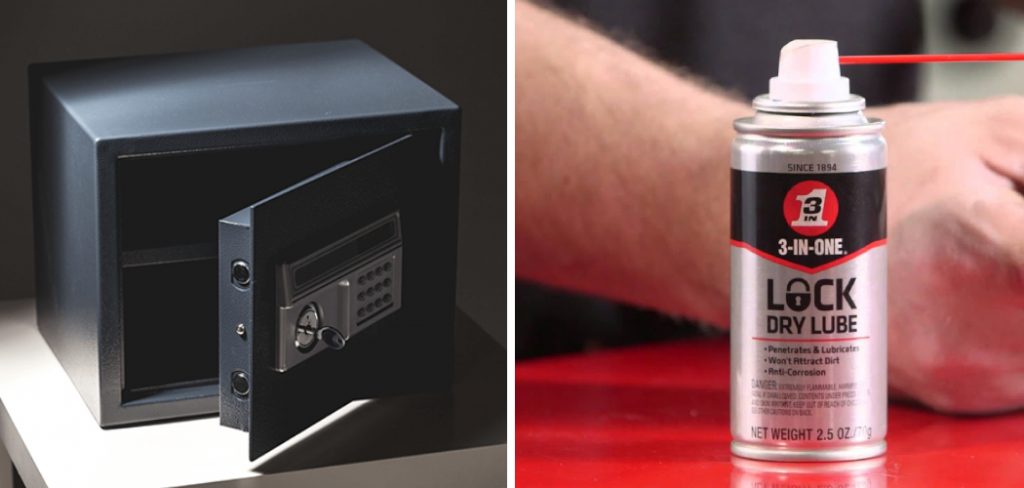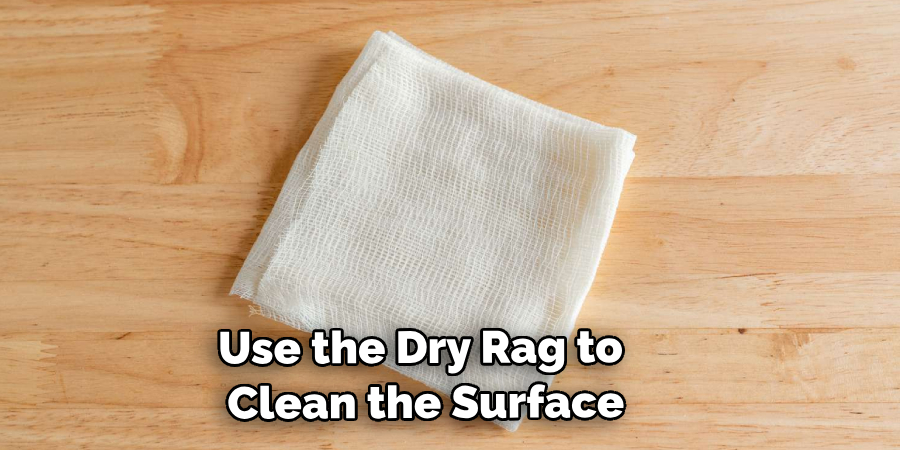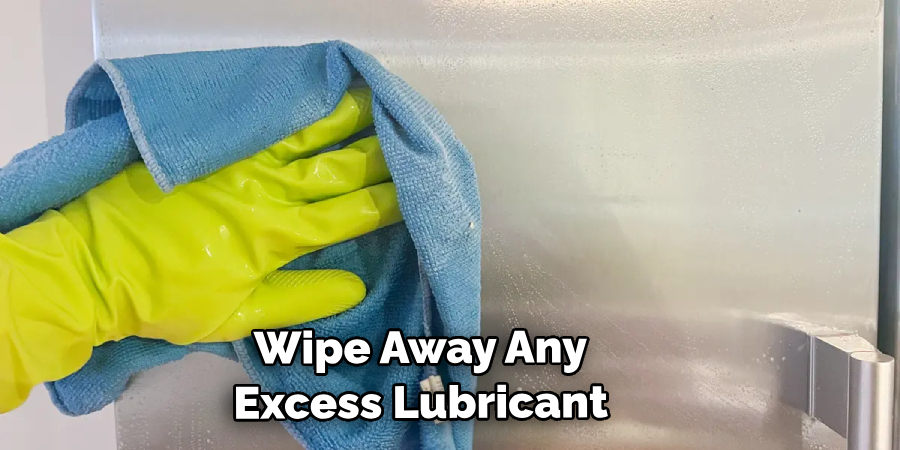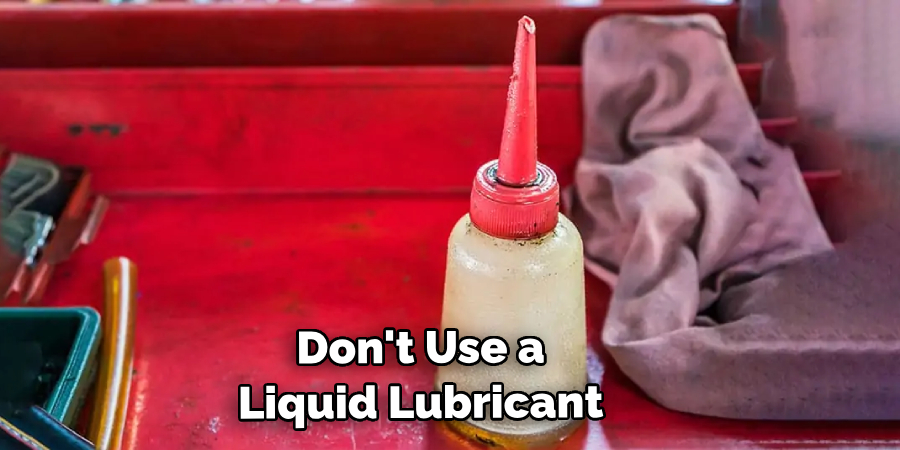Are you looking to secure your valuables with a combination safe lock? As daunting as it may sound, lubricating the lock is incredibly important for keeping it working in tip-top condition. Proper lubrication can help reduce or even eliminate any grinding noises from the tumblers and ensure the smooth operation of your lock over time.

Whether you have a manual combination safe lock or an electronic one, it is important to make sure that the right lubrication is used. Here are some steps on how to lubricate a combination safe lock properly. Just remember to test your lock after lubrication.
In this blog post, we will show you how to correctly lubricate a combination safe lock so that you can keep it performing optimally!
What Will You Need?
Before you get started, here are the things you will need:
- Lock lubrication solution from a reliable supplier – this should be designed specifically for locks and not any other type of machinery.
- A cotton swab or old toothbrush.
- Dry rag or cloth to clean away excess lubricant.
- Small screwdriver (for manual combination locks).
Once you have all these items, you can move on to the next step.
10 Easy Steps on How to Lubricate a Combination Safe Lock
Step 1. Ensure the Lock is Clean:
The first step before lubricating your combination safe lock is to ensure it is clean. Use the dry rag to clean the surface of the lock and the small screwdriver to dislodge any debris within the keyhole or combination wheels. This will ensure the lubricant can work most effectively.

Step 2. Apply the Lubricant:
Once the lock is clean, you can start applying the lubrication solution. Dip the cotton swab into the lubricant and apply it to the internal mechanisms of your combination safe lock – for manual locks, this could be within the keyhole or combination wheels, and for electronic locks, it could be inside the battery. Be sure not to over-lubricate, as this could cause more damage than good.
Step 3. Perform a Test:
Once you have applied the lubricant, it’s time to test your lock! Turn each combination wheel or press keypad buttons to ensure they are all working properly and that the lock is now unlocking and locking as normal. Try this a few times to make sure the lubricant is working.
Step 4. Wipe Away Excess Lubricant:
Once you have tested your lock, use the dry rag or cloth to wipe away any excess lubricant from the exterior of the combination safe lock. This will help prevent any further corrosion or damage to your lock in the future. If you need clarification, contact a locksmith to come and inspect your lock.

Step 5. Regular Maintenance:
Regular maintenance is key for the longevity of your combination safe lock. Even after lubrication, ensure to clean and check the lock routinely. This will help identify any possible issues before they become serious and assure the lock’s optimal performance. Remember, a well-maintained lock is the best deterrent against unauthorized access.
Step 6. Schedule Regular Lubrication:
For the best performance of your combination safe lock, it’s advisable to schedule regular lubrication intervals. Depending on the frequency of use and the environmental conditions, you may need to lubricate your lock every six months to a year.
Regular lubrication will help keep the internal mechanisms of the lock functioning smoothly and extend the overall lifespan of your lock. Make sure to mark your calendar so you remember this crucial step in lock maintenance!
Step 7. Consult a Professional:
If you need clarification about the lubrication process, or if your lock needs to be fixed even after lubrication, it may be time to consult a professional. A qualified locksmith has the knowledge and tools to maintain and repair combination-safe locks properly.
They can inspect the lock, accurately diagnose any issues, and suggest the right action. Trying to force or tamper with a malfunctioning lock might cause irreparable damage. When in doubt, always reach out to a professional locksmith service.
Step 8. Clean the Surrounding Area:
After the lubrication process, make sure to clean up the surrounding area. Any accidental lubricant spillage on the safe’s surface or the surrounding floor can lead to slip hazards or damage to the finish.
To clean up, simply use a dry cloth to wipe off any excess lubricant. Remember to properly dispose of used rags or swabs to avoid potential fire hazards. Thus, keeping the area clean contributes to a safer work environment and maintains the aesthetic appeal of your safe.
Step 9. Store Lubrication Supplies Correctly:
Remember to store your lubrication supplies correctly after you’ve finished lubricating your combination safe lock. This includes tightly sealing the lubricant container to prevent it from drying out or spilling and disposing of any used cotton swabs or rags.
The small screwdriver and other tools should also be put away safely to prevent accidents or loss. Properly storing your supplies extends their lifespan and ensures that they’re ready for use the next time you need to lubricate your lock.
Step 10. Keep a Maintenance Log:
It’s wise to keep a maintenance log for your combination safe lock. This log should include the dates of each lubrication and any notable observations or issues during the process.
Should you need to consult a professional locksmith, this log can provide valuable insights into your lock’s maintenance history and any recurring problems. Additionally, a well-kept maintenance log serves as a reminder for scheduled lubrication and can help effectively manage your lock’s overall health.

By following these ten easy steps to lubricate a combination-safe lock, you can ensure optimal performance and extend the lifespan of your lock. Proper maintenance is essential for keeping your lock secure, so adhere to these guidelines!
5 Additional Tips and Tricks
- Use the Right Lubricant: When lubricating a combination safe lock, it’s crucial to use the right lubricant. Avoid petroleum-based products as they can gum up the lock over time. Instead, opt for a dry lubricant like graphite powder, which won’t attract dirt or dust.
- Go Light: A little bit of lubricant goes a long way. Over-lubricating the lock can cause more harm than good, so use sparingly.
- Use a Q-Tip or Thin Brush: When applying the lubricant, it’s best to use either a Q-Tip or thin brush as they’ll provide the most precise coverage and prevent any dripping or mess.
- Avoid Overdoing It: As mentioned above, it’s important not to overdo it with the lubricant, as too much can cause the lock to clog up and eventually malfunction.
- Make Sure Lock is Clean Before Lubricating: Before lubricating a combination safe lock, make sure that you first clean the lock thoroughly to remove any dirt and debris. This will help ensure that the lubricant can coat all of the moving parts evenly.
With these five tips and tricks, you can easily lubricate a combination safe lock like a pro! There is no need to hire an expensive locksmith or buy a new lock as long as you take the time to do it correctly.
5 Things You Should Avoid
- Don’t Use a Liquid Lubricant: A liquid lubricant may seem like the easiest option, but it’s best to avoid using it. Not only are they messy and difficult to apply correctly, they can also attract dirt and dust, which will eventually gum up the lock.
- Avoid Using Too Much Lubricant: Overdoing it with the lubricant can cause the lock to clog up and eventually malfunction. Therefore, it’s best to use a light coating of lubricant.
- Don’t Spray Inside Lock: It may be tempting to spray inside the lock, but this is not recommended as it can lead to corrosion and damage. Instead, opt for a drier lubricant like graphite powder.
- Don’t Use Petroleum-Based Products: Petroleum-based products are a major no-no for lubricating combination safe locks. Avoid using them at all costs, as they can gum up the lock over time.
- Don’t Forget To Clean Lock First: Before lubricating, make sure that you first clean the lock thoroughly to remove any dirt and debris. This will help ensure that the lubricant is able to coat all of the moving parts evenly.

By avoiding these five common mistakes, you can easily ensure that your combination safe lock is properly lubricated for optimal performance. Follow these tips and tricks, and you’ll have a perfectly functioning lock in no time!
Conclusion
Even though lubricating a combination safe lock can seem intimidating, you can rest assured knowing that it’s easier to get the job done with the right tools and techniques. Whether you decide to choose your lubricants or opt in for professional help, make sure that you take appropriate precautions, like using plastic covering while applying components, so you don’t cause any long-term damage.
Hopefully, the article on how to lubricate a combination safe lock was helpful and gave you the confidence to get started with lubricating your locks. If you ever have any doubts, don’t hesitate to contact a professional locksmith for help.
Now, keep your most valuable possessions safely locked away—properly lubricated!
About
Safety Fic is a distinguished figure in the world of Diy design, with a decade of expertise creating innovative and sustainable Diy solutions. His professional focus lies in merging traditional craftsmanship with modern manufacturing techniques, fostering designs that are both practical and environmentally conscious. As the author of diy, Safety Fic delves into the art and science of Safety Fic-making, inspiring artisans and industry professionals alike.
Education RMIT University
(Melbourne, Australia) Associate Degree in Design (Safety Fic) Focus on sustainable design, industry-driven projects, and practical craftsmanship. Gained hands-on experience with traditional and digital manufacturing tools, such as CAD and CNC software.
Nottingham Trent University
(United Kingdom) Bachelor’s in diyfastly.com and Product Design (Honors) Specialized in product design with a focus on blending creativity with production techniques. Participated in industry projects, working with companies like John Lewis and Vitsoe to gain real-world insights.
Publications and Impact
In diy, Safety Fic his insights on indoor design processes, materials, and strategies for efficient production. His writing bridges the gap between artisan knowledge and modern industry needs, making it a must-read for both budding designers and seasoned professionals.
